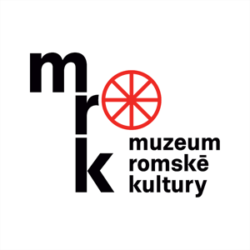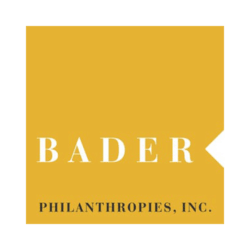Josef Jelínek
Josef Jelínek, original surname Kýr, born 1919, Strážnice, Hodonín district
-
Testimony abstract
Josef Jelínek was born into a family of blacksmiths. They had a cottage of cob bricks and a forge.[1] Josef was the youngest of six siblings; he attended the primary school in Strážnice and did three grades of secondary school. His classmates often taunted him for being a “gypsy” and even the teachers did not treat him well. He was not accepted for further study, so he began to work in his father's forge. They made railroad nails, spikes, etc., for the Tomáš mine in Ratíškovice.
- [1] The cottage stood in the Roma settlement in Strážnice near the Skalice Gate. (ed.)
Josef Jelínek had been living with his fiancée and nine-month-old son for only a month when on 15 March 1943, at midnight, he was dragged out of bed by a gendarme by the name of Vedra[1] and two men in leather coats. Without giving him a chance to say goodbye, they took him to the station, where he was reunited with his entire family in a railway wagon. They spent the night in the wagon, guarded by a German soldier with a machine gun; there were 50 of them in there and only one bucket in the corner as a toilet. The next day they reached Olomouc. They were taken by goods lorry to the old theatre.[2] They were guarded there by the gendarme J. Zezula from Petrov. On the fourth day they had their heads shaved and a cardboard sign with a number put around their necks, and were then taken to the station where the train was already standing. It stopped in Ostrava, where they were given a bucket of water; by that time they had not eaten for seven days. Everyone on the train was crying and comforting themselves with the fact that they might be taken to the Ukraine to work.
They reached their destination in the afternoon, and had to line up in ten abreast and march into the camp [Auschwitz II-Birkenau]. They had to strip naked (women, men and children together) in a building marked Waschraum [washroom] and immerse themselves completely in tubs; their skin turned red and burned like fire. Then they had to stand on a stool outside and prisoners shaved off all their body hair. The women in particular were ashamed and cried; several were beaten with cables by the SS. They were tattooed with [prison] numbers with three needles tied together, and a “block elder” with a green triangle[3] assigned them a place in a barrack with bunk beds: one bare wooden bed of 2 x 2 metres for every ten persons.
All days were the same - a piece of bread and margarine at 5.00 am, then a roll call and work until 6.00 pm. For lunch, their cellmates brought them beet soup. They were digging trenches for sewers and the food was insufficient for such hard work, so they also ate roots they dug up.
The elderly people and children in Jelínek's block were soon taken to the gas chamber, among them his parents and his siblings’ children. The selection was made during the morning rounds by the Lagerarzt [camp doctor] Dr. Mengele. Some of the prisoners could not bear the psychological stress and died deliberately on the wires of the electric fence.
The women were housed in what was called the women's camp and worked on road construction. If any of them could not keep up with the pace of the work, they would be beaten or shot by the SS. It was the same for the men. Jelínek recalled that when they were digging a three-metre-deep trench and his forty-eight-year-old brother[4] could not get out with a wheelbarrow of dirt, an SS man killed him with a spade blow to the back of the head. The prisoners killed at work had to be brought to the camp in the evening so that they could be counted. However, the numbers were constantly being replenished from new transports.[5]
After three months, Jelínek and other young men were transferred from the so-called Gypsy family camp to the main camp. They were housed in brick buildings and slept on straw mattresses. He worked in Kommando 122, commanded by a German nicknamed Jupp; they built quarters for the families of SS members. Of his fellow prisoners, he remembered how friendly the Soviets were. Once, when a guard beat his friend Ivan to death, the other Russians took revenge by stabbing the guard with a file. He admired the courage with which they then went to their own execution.
The situation in the camp worsened, with more and more dead being brought back from work every day. He recalled a mass execution of eleven prisoners on the gallows during roll call. Lagerkommandant [Rudolf] Höss introduced it with a speech saying that all the Slavs would pass through the chimneys of the crematoria. Prisoners were beaten more frequently, and warnings were spread through the camp not to go to the camp hospital because the patients there were receiving lethal injections. Jelínek's second elder brother[6] died there. He went to the camp hospital with toothache and his dead body was thrown out the next day.
In September 1943, Mengele selected young prisoners from a line-up, and Jelínek was among them. They were taken to a building nicknamed Mengele's sauna. They were given beef soup, potatoes and meat for a week, then Mengele measured and weighed them and they were given an injection in the left shoulder. Jelínek became very thirsty and feverish and fell asleep; the same injection, he says, was given to a guinea pig which died soon after. Among the prisoners was a doctor Jílek[7] who told Jelínek that he had been inoculated with epidemic typhus. Then he received another injection, after which he had blue spots all over his body, and again he was given a better diet. After a week, the procedure was repeated, another guinea pig died, and Jelínek suffered from chills and pain. After three days he was allowed to return to his team. Thirty-one of fifty prisoners survived the experiment.
In March 1944, the camp was evacuated, and only the sick remained in the camp hospital. Josef Jelínek was taken by transport to Buchenwald, where he met František Mráz from Hodonín, Dr. Češpiva from Prague, and Dr. Zelený.[8] He worked in a stone quarry for three weeks, and was then transferred to the Dora concentration camp in Norhausen.[9] In the underground factory, he was involved in the production of V1 and V2. Approximately 18,000 prisoners of Soviet nationality worked there[10] who knew that the rockets were being launched on England from Cologne and recommended ways of sabotaging production. Wehrmacht soldiers supervised everything and hanged prisoners on suspicion of sabotage. Josef Jelínek recalled that he often worked beneath a hanged prisoner for five hours before the body was untied and taken away. A group of prisoners who marked the rocket wagons with labels and deliberately switched them were also executed after it was discovered.
In September 1944 a group of French and Soviet prisoners managed to blow up the main transformer and the tunnel was without power for three days. Jelínek had actually been on the night shift; they had to wait their turn and were taken to the camp in the morning. At the gate, some of them were selected and the camp commandant then called on the saboteurs to confess or he would execute these randomly selected men. In all, 78 of the masterminds of the action stepped out of the line and were subsequently hanged; in addition, the Germans shot many more after the order to disperse.
In Dora, they initially slept on the floor of the underground factory, where it was noisy and damp; later they were housed in a camp and commuted to the factory for twelve-hour shifts. There was a twelve-kilometre tunnel running through the complex, which was also accessed by a railway, and from which there were entrances to halls equipped with modern machinery. The prisoners worked in one half of the complex, while the other half was an armaments factory, where men on forced labour worked.
In April 1945, the camp was evacuated; they were given a kilo loaf of bread and a tin of food for the train journey. On the fourth day they reached Ravensbrück and, on orders from the SS, they threw the bodies of those who had not survived the journey out of the wagons and spent the night in the women's concentration camp. The next morning they were lined up for another march with the women prisoners. Those who could not go on were shot. After two days, they reached a village where the locals offered them food, and in the ensuing chaos, Jelínek managed to escape.[11] For four days he and two other prisoners hid in the woods. Then they reached a bridge over the river over which the Germans were retreating and throwing away their shoulder boards and their weapons. Jelínek and the two prisoners thus obtained submachine guns and shot the last two German soldiers, who evidently intended to blow up the bridge. The next morning on the bridge they were welcomed by Russian soldiers and sent to the nearest town. It was Schwerin, and they were billeted, along with many others, in a former barracks where Jelínek waited to be taken to Czechoslovakia. He was transported to Prague and at the main station took the first train to Brno He was wearing prison clothes and over them a uniform given to him by the Russians. At the Brno-Černovice station he was joined by František Navrátil from Uherský Ostroh. They sought out the Red Cross centre[12] where they were able to have a bath, eat and sleep. The next day Jelínek drove to Strážnice. On the way from the station, all he could think about was whether he would be reunited with his fiancée and son. The boy did not recognize him when they met on the street, but his fiancée was already waiting at the door. He reported that it was a joyful and tearful welcome.
- [1] First name not given.
- [2] The theatre hall in the former inn “U Odstrčilů” at Chválkovice. (ed.)
- [3] The mark of a convicted criminals.
- [4] Name not given.
- [5] For example, the mass transports from the Protectorate of 7 May, 22 August and 19 October 1943. (ed.)
- [6] Name not given.
- [7] Probably the Jewish physician Dr. Alfréd Mílek from Prague. (ed.)
- [8] First names not given.
- [9] Originally a branch of the camp at Buchenwald, it later became independent; officially it was called Mittelbau I. (ed.)
- [10] According to the records of November 1, 1944, there were 9,481 Soviet prisoners of war, 8,347 Poles, 5,114 French, 2,114 Germans, 2,047 Belgians, 1,185 Roma, 1,170 Hungarian Jews, 1,078 Czechs, 500 Italians, 415 Yugoslavs, 212 Dutch, and 704 members of other or unidentified nationalities. (ed.)
- [11] The Ravensbrück concentration camp was evacuated during the week of 21-28 April 1945. (ed.)
- [12] The Red Cross and the repatriation centre of the Ministry of Labour operated in the Padowetz Palace on the corner of Masaryk Street in Brno.
How to cite abstract
Abstract of testimony from: NEČAS, Ctibor, ed. Nemůžeme zapomenout = Našťi bisteras : nucená táborová koncentrace ve vyprávěních romských pamětníků. Olomouc: Univerzita Palackého, 1994. ISBN 80-7067-354-0, 160-171. Testimonies of the Roma and Sinti. Project of the Prague Forum for Romani Histories, https://www.romatestimonies.com/testimony/josef-jelinek (accessed 4/19/2025) -
Origin of Testimony
This contribution by Josef Jelínek, is an abridged version of the work he submitted under the title “My Father’s Last Words” to a competition for commemorative, historical and documentary works arranged by what was at that time (29 February 1980) the Czech Union of Anti-Fascist Fighters. The manuscript is stored in the Military History Institute in Prague.
-
Where to find this testimony




